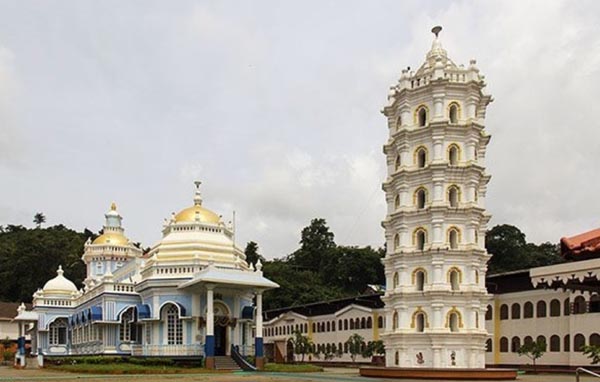Mangueshi Temple (Mangeshi Temple)

Information of Mangueshi Temple (Mangeshi Temple), Ponda, Goa
The Mangueshi Temple is located in Mangeshi village in Ponda in northern Goa. The location of the temple is 21 kilometres from the capital of Goa that is Panaji. It is a Hindu temple dedicated to Lord Mangueshi who is considered as an incarnation of Lord Shiva. He is the kuldevta of Hindus in Goa. It is one of the largest temples in Goa and is very popular among devotees.
Mangueshi Temple (Mangeshi Temple) Religious Significance
Being one of the largest temples in Goa the Mangeshi temple performs a large number of Hindu rituals and puja in the temple daily. The temple is performs rituals in the name of Lord Manguesh who is an incarnation of Lord Shiva. The most important days are on Mondays when the idol of Munguesh is carried around the temple in a procession in the evening. Every day the idol is worshipped and aarti is carried out every noon.
A large number of festivals are celebrated in the temple every year. The festivals include Navaratri, Dusshera, Diwali, Rama Navami, Akshaya Tritiya, Anant Vritotsava, Magha Poornima and MahaShivratri. The temple is open throughout the year.
Mangueshi Temple (Mangeshi Temple) Mythology & History
According to the Hindu mythology the present day Mangesh Linga was have made to a sacred idol on Mangireesh mountain on the bank of Bhagirathi river by Lord Brahma. Lord Brahma is placed as the Supreme Being and the creator of the universe and all living beings. He is the most powerful and is one among the tridevas along with Lord Vishnu and Lord Shiva. After the sacred ritual the Mangesh Linga was shifted to Trihotrapuri in Bihar by the Saraswat Brahmins. Then again from Bihar they shifted the Linga to the banks of Gomati River where the Mangueshi Temple is located today in Gomantaka.
Lord Manguesh, the incarnation of Lord Shiva has another legend behind it. Once, Lord Shiva transformed himself into a ferocious tiger to frighten his wife Parvati, upon being so she went in search of Lord Shiva and called out saying, "Trahi Mam girisha!" which meant "oh! Lord of Mountains, save me". The word Mam grisha was by time came to be known as Manguesh.
The Mangueshi temple was originally sited at the village of Salcette in Goa until it was invaded by the Portuguese army and the temple was shifted to the present located in 1543. The temple was built under the rule of Hindu Kings. Since then the temple has been renovated a large number of time and transformed from a simple structure to a magnificent temple structure. The temple was built 400 years ago but the presiding structure was built only after it had completed 150 years old under the rule of the Maratha rulers.
Mangueshi Temple (Mangeshi Temple) Architectural Significance
The temple complex is a simple yet magnificent emitting a dainty outlook. It belongs to the common architectural style observed in the temples of Goa. The temple has an influence from Muslim as well as European art. It comprises of a number of domes of different sizes which is an adoption of the Muslim art. The tallest dome right on top of the sanctum sanctorum has a golden kalash on it. There are several pillars, pilasters and balustrades decorating the holy structure giving it an elegant look. The Deepastambha or the holy lamp present in this temple is seven storeys. The oldest part of the temple complex is a water tank bearing holy water. The sanctum sanctorum of the temple comprises of a golden idol of Lord Manguesh decorated with beautiful and precious ornaments. There is an assembly hall or the Sabha Griha used for many rituals and can accommodate up to 500 people.
- Andhra Pradesh Temples
- Assam Temples
- Bihar Temples
- New Delhi Temples
- Goa Temples
- Gujarat Temples
- Jammu and Kashmir Temples
- Karnataka Temples
- Kerala Temples
- Madhya Pradesh Temples
- Maharashtra Temples
- Odisha Temples
- Punjab Temples
- Rajasthan Temples
- Sikkim Temples
- Tamil Nadu Temples
- Telangana Temples
- Uttar Pradesh Temples
- Uttarakhand Temples
- West Bengal Temples